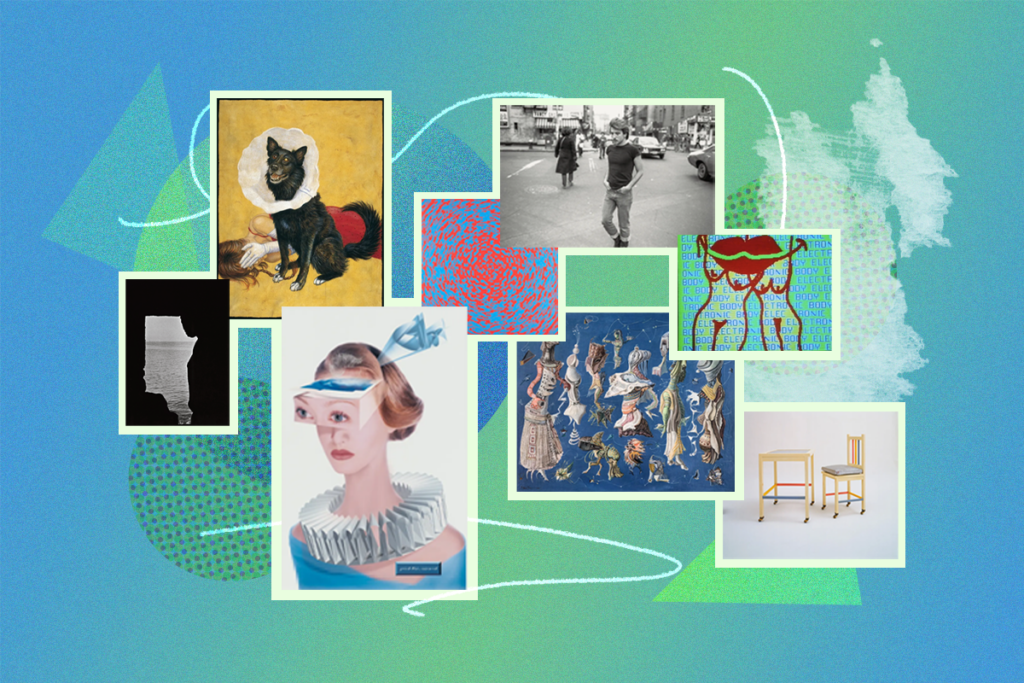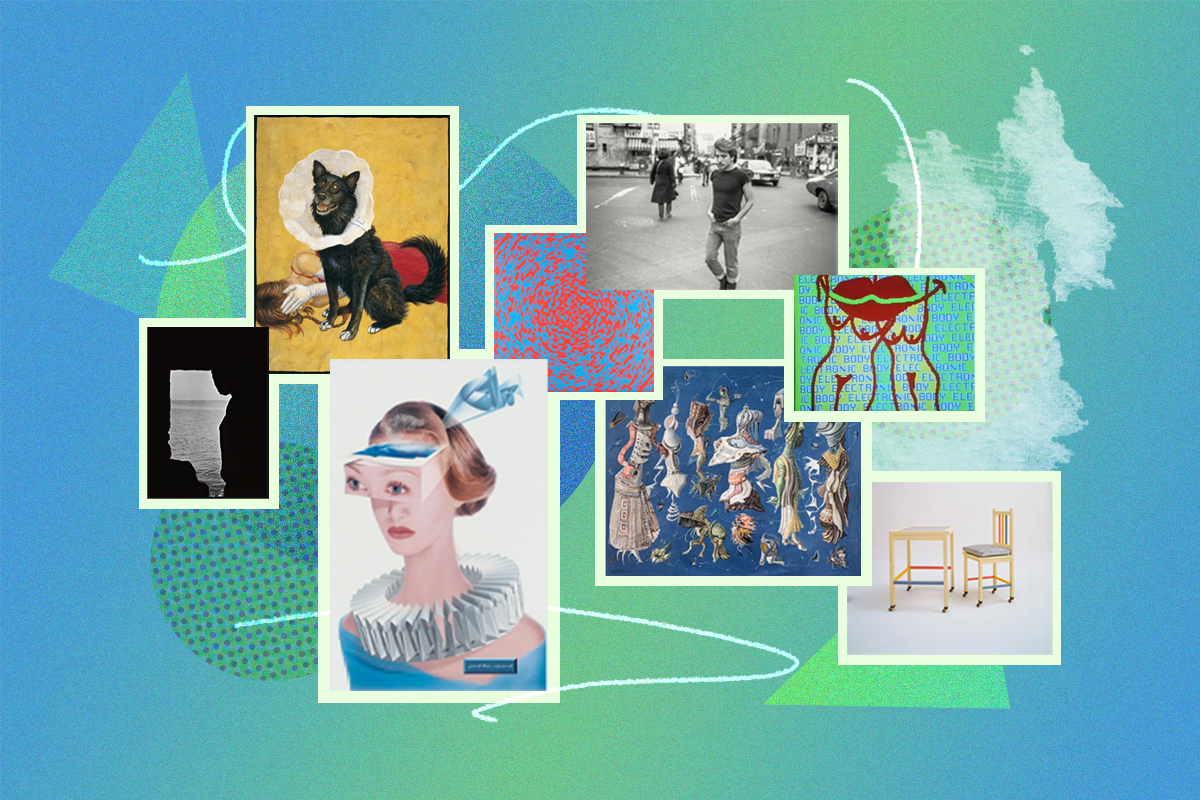
In a word, this fall’s offerings are electric. The word shows up in the titles of not one but two tech-minded shows—one devoted to Op art and its influence, the other to the rise of digital art, at the Buffalo AKG Art Gallery and Tate Modern, respectively. It may as well also have figured in the name of a survey of women artists who involved computers in their art at MUDAM in Luxembourg, or to an exhibition about digital effects technologies at LACMA.
But the word “electric” might also be used to characterize a number of more analog offerings as well. The Centre Pompidou’s long-awaited Surrealism blowout is finally nearly upon us, as are retrospectives for well-established figures such as Lygia Clark, Thomas Schütte, Amy Sherald, Elizabeth Catlett, Sophie Calle, Rotimi Fani-Kayode, and more.
Art history nerds will find much to geek out about: the Metropolitan Museum of Art is mounting a blockbuster about pre-Renaissance Sienese art, the Qatar Museums are putting 19th-century French painter Jean-Léon Gérôme under the microscope, and the Getty Foundation’s science-minded edition of PST ART will reintroduce many deep cuts in more than 60 shows at venues across Southern California. Other shows will add new chapters to the discipline’s annals: there are expansive surveys of Indian and Pakistani art on the horizon, as well as shows about 1970s documentary photography and lens-based art in the UK during the 1980s.
Perhaps you crave something more spectacular? For that, look no further than a long-awaited survey devoted at Seoul’s Leeum Museum of Art for Anicka Yi, whose past works have involved AI and cutting-edge technology. You could probably apply the word “electric” to that show, too, in more sense than one. Below, a look at 81 museum shows and biennials to see this fall.
-
“Connecting Bodies: Asian Women Artists” at National Museum of Modern and Contemporary Art, Seoul

Image Credit: ©Yiu Xiuzhen/Courtesy Beijing Commune and Pace Gallery In recent years, Seoul’s top modern art museum, known as the MMCA for short, has made a concerted effort to acquire more works by Asian women artists. The results of that project form the basis of this show, a wide-ranging survey that stakes a claim for the importance of these artists, many of whom are still awaiting greater recognition outside Asia. Among those artists is Hong Lee Hyun-sook, a giant of feminist art in South Korea, where she is known for artworks that emphasize collaboration and solidarity with animals as a means of liberation.
September 3, 2024–March 3, 2025
-
“Surrealism” at Centre Pompidou, Paris
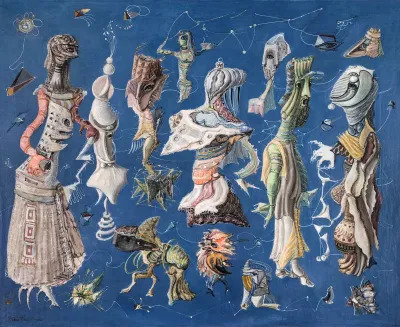
Image Credit: Collection RAW (Rediscovering Art by Women) A year of celebrations for Surrealism, the avant-garde movement launched a century ago, reaches its apex with this blockbuster, which aspires to be just as perplexing as much of the art associated with the movement. In lieu of the traditional exhibition format, this one will be shaped like a maze, with André Breton’s 1924 Surrealist manifesto at its core. Surrounding it will be 14 sections that chart how Surrealists of all kinds interpreted literary texts and symbols. Agreed-upon masterpieces abound—Salvador Dalí’s The Great Masturbator (1929) and René Magritte’s Personal Values (1952) have made their way from Madrid and San Francisco, respectively, for the show. Yet the exhibition, in keeping with other recent surveys that have globalized Surrealism, also seeks to lure in some lesser-known figures, from the British nonpareil Ithell Colquhoun to the Japanese draughtsman Tatsuo Ikeda.
September 4, 2024–January 13, 2025
-
“Anicka Yi: There Exists Another Evolution, But This One” at Leeum Museum of Art, Seoul
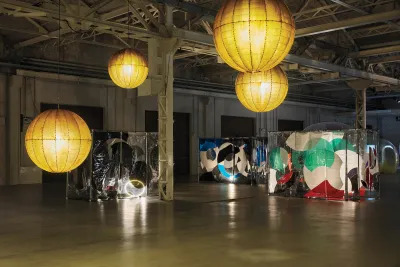
Image Credit: Photo Agostino Osio/Courtesy the artist and Pirelli HangarBicocca, Milan Anicka Yi has awed audiences worldwide with high-tech works that consider the increasingly thin divide between humans and nonhumans, with dried flowers, AI, bacteria, scents culled from mega-galleries and New York’s Koreatown, and more among the materials for her innovative sculptures. Part of what makes her work so fascinating is its enigmatic quality, and that may be why the artist hasn’t said much about the new works she will unveil in this show, leaving us only with a Buddhist koan for a title. The show, whose 30 works act as a survey of Yi’s oeuvre, is significant in that it will Asia’s big introduction to her art, since the region has never before seen a museum show by this Korean American artist.
September 5, 2024–December 29, 2024
-
Aleksandra Domanović at Kunsthalle Wien, Vienna
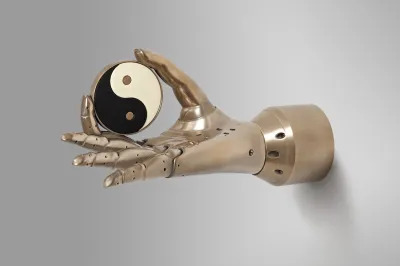
Image Credit: Gunter Lepkowski/Courtesy the artist and Tanya Leighton, Berlin and Los Angeles In the late 2000s, just before post-internet art took off, Aleksandra Domanović began to make available PDFs that, when printed using specific settings, resulted in stacks with imagery on their sides. These images were sometimes unsettling: some produced pictures related to the dissolution of Yugoslavia. Her unusual blend of sleek digital art and rough post-Soviet political matter made her a key artist of the era, and in the decade and a half since, she has continued producing off-kilter, thought-provoking art, from cyborgian sculptures to prints of stills from sci-fi movies. Domanović’s first survey includes new works such as If These Walls Could Talk (2024), a piece that will combine images of Ian Donald, the physicist credited with developing ultrasounds for obstetric usage, and Slovak folk patterns.
September 5, 2024–January 26, 2025
-
“Scott Burton: Shape Shift” at Pulitzer Arts Foundation, St. Louis
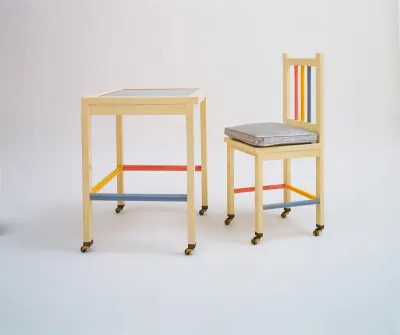
Image Credit: ©2024 Estate of Scott Burton/Artist Rights Society (ARS), New York/Digital Image ©The Museum of Modern Art/Licensed by SCALA/Art Resource, New York Scott Burton once said his artworks could be considered “sculpture in love with furniture,” a reference to the way that pieces imploded the boundary between art and design. Many of his sculptures could be sat upon, though they hardly functioned like chairs; other works by him looked like tables, though not of the sort you’d want in your home. Burton’s art doubled as a sly subversion of Minimalist aesthetics and an off-kilter inquiry into how a sculpture might invite forms of engagement beyond looking. Here, for the first time since his death of AIDS-related complications in 1989, this underrated artist will receive a proper survey, this one with a specific focus on his queer identity.
September 6, 2024–February 2, 2025
-
Carl Cheng at the Contemporary Austin, Texas

Image Credit: Ruben Diaz/Courtesy the artist and Philip Martin Gallery, Los Angeles In 1967, Carl Cheng began to take the name John Doe Co., a moniker that referred to a faux company that produced unusable emergency kits, TVs with rocks in them, and more. These objects—which were, in fact, sculptures, not products made available for sale—mocked how corporations molded the natural world to their purposes and made it available for purchase. As more and more artists turn their attention toward climate change, it is no surprise that Cheng’s work has become the source of newfound interest. At long last, this octogenarian Californian will receive his first retrospective, which opens first in Texas before traveling to Philadelphia, the Netherlands, Switzerland, and Los Angeles.
September 6, 2024–December 8, 2024
-
“Mark Bradford: Keep Walking” at Hamburger Bahnhof, Berlin
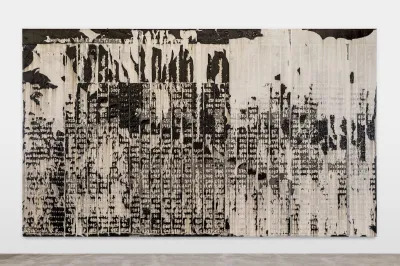
Image Credit: ©Mark Bradford/Courtesy the artist and Hauser & Wirth For his 2022 piece 500, Mark Bradford created 60 painted versions of a 1913 ad imploring Black families to move to a colony in New Mexico called Blackdom. Bradford painted the ad in uneven shades of black and orange, a color palette that made the posting appear as though it were smoldering—an effect meant to mirror the destruction that has repeatedly threatened Black communities across the nation. Similar works dealing with Black history will appear in Bradford’s latest show, the first staged by the Hamburger Bahnhof in the newly reopened Rieckenhallen, an expansive exhibition space that was nearly lost to a real estate developer several years ago.
September 6, 2024–May 18, 2025
-
Gwangju Biennale

Image Credit: Photo Jung Yeon-je/AFP via Getty Images The curatorial ambitions of Nicolas Bourriaud, the figure behind the term “relational aesthetics,” have rarely failed him, and that alone makes his edition of Asia’s top biennial worth attending. His focus, as usual, is broad: multiverses, climate change, and sound will all play a role in his biennial, which is titled “Pansori, a soundscape of the 21st century,” its name a reference to the Korean word for “the noise from the public place.” Providing that noise are dozens of artists from across the globe, including Gaëlle Choisne, Dora Budor, Frida Orupabo, Yein Lee, Philippe Parreno, and more.
September 7, 2024–December 1, 2024
-
Noah Davis at Das Minsk, Potsdam, Germany
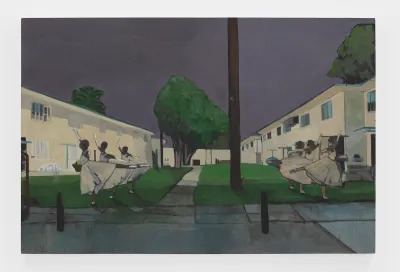
Image Credit: Miguel Pimentel/©The Estate of Noah Davis/Courtesy the Estate of Noah Davis and David Zwirner In one of Noah Davis’s dreamy paintings, Black ballet dancers in tutus perform outdoors, seemingly unaware that they are sited among sidewalks and grass, not in a studio. There is no audience to watch them, and there are no people at all around them. The piece exemplifies Davis’s tendency to transplant Black figures into settings that have no clear meaning, causing them to appear intentionally illegible, lost in their own worlds. Works like this one are immersive—no small feat for an artist who died at 32—and some 50 of them will be include in what is being billed as a retrospective for an artist gone too soon.
September 7, 2024–January 5, 2025
-
“Christopher Kulendran Thomas: Safe Zone” at WIELS Contemporary Art Centre, Brussels

Image Credit: Courtesy the artist Even before AI became the stuff of general conversation, Christopher Kulendran Thomas had been using it to create videos and paintings that braid together a wide array of topics: pop stars, viral sensations, the history of Tamil Eelam, the story of abstraction, and more. His WIELS show will continue his usage of AI, here in the form of new paintings. There will also be a never-before-shown 24-screen video installation, Peace Core (2024), which appropriates a news report aired in the US and re-edits it using the style of the TikTok trend corecore, in which unlike video clips are massed together and set to a melodramatic soundtrack.
September 7, 2024–January 5, 2025
-
“Emily Karaka: Ka Awatea, A New Dawn” at Sharjah Art Foundation, United Arab Emirates
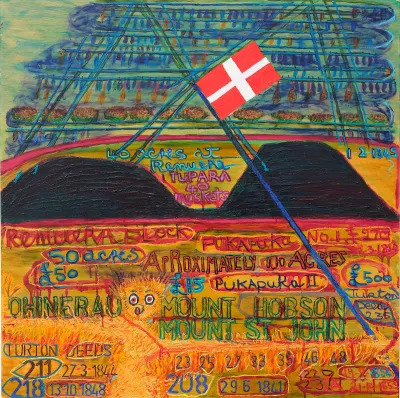
Image Credit: Samuel Hartnett/Courtesy Season, Tāmaki Makaurau, Auckland Emily Karaka’s raucously colored paintings bridge the gap between Abstract Expressionism and traditional Māori craft, infusing modernist styles with political import. Aptly, these works, which depict verdant forests and scrawled heads, have been termed “political landscapes” by the Māori artist, a reference to how the land imagined in the paintings should be viewed as imbued with Indigenous history—and subject to exploitation by white colonialists. A leading figure of the Aotearoa’s art scene, Karaka will here receive her first survey.
September 7, 2024–December 1, 2024
-
Manifesta
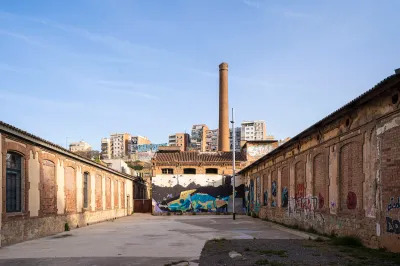
Image Credit: Helena Roig/©Manifesta 15 Barcelona Metropolitana This roving biennial has historically taken place in one city or region imperiled in a debate over its very existence. This year’s locale is no different: Barcelona is the capital of Catalonia, where pro-independence parties recently lost their majority in the autonomous community’s Parliament. Against that backdrop, organizer Filipa Oliveira—formally titled the biennial’s Artistic Creative Mediator—has sprinkled works by 85 artists across 12 cities in the Barcelona metropolitan area. Emilija Škarnulytė, Judy Chicago, Larry Achiampong, Claudia Pagès, and Binta Diaw are among those lined up to participate.
September 8, 2024–November 24, 2024
-
“Saodat Ismailova: A Seed Under Our Tongue” at Pirelli HangarBicocca, Milan
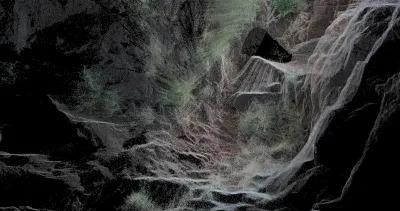
Image Credit: ©Saodat Ismailova/Courtesy the artist Saodat Ismailova’s slow, meditative film installations tend to feature long takes of landscapes complemented often by shots of women cloistered in domestic settings. These works are intended to communicate the histories of Central Asian countries such as Uzbekistan, Ismailova’s homeland. While her art may seem culturally specific, it has had broad appeal, memorably appearing in both Documenta and the Venice Biennale in 2022 alone. Her fast ascent in the international art world continues with this survey, which includes a re-edited version of a film about a forest in Kyrgyzstan and a resin cast of a cave.
September 12, 2024–January 12, 2025
-
“Elizabeth Catlett: A Black Revolutionary Artist and All That It Implies” at Brooklyn Museum, New York
In her 1968 sculpture Black Unity, Elizabeth Catlett portrays a clenched fist, its knuckles and fingers hewn from a block of softly sanded cedar. The sculpture, with its revolutionary content and its minimalist aesthetic, typifies Catlett’s legendary oeuvre, with married Black leftist politics and modernist styles. Some 150 of her works—many depicting people in Mexico, the country where she resided for much of her career—will be assembled for this hotly anticipated retrospective, which starts in New York before traveling to the National Gallery of Art in Washington, D.C. (its co-organizer) and the Art Institute of Chicago.
September 13, 2024–January 19, 2025
-
“Erwin Wurm: A 70th-Birthday Retrospective” at Albertina, Vienna
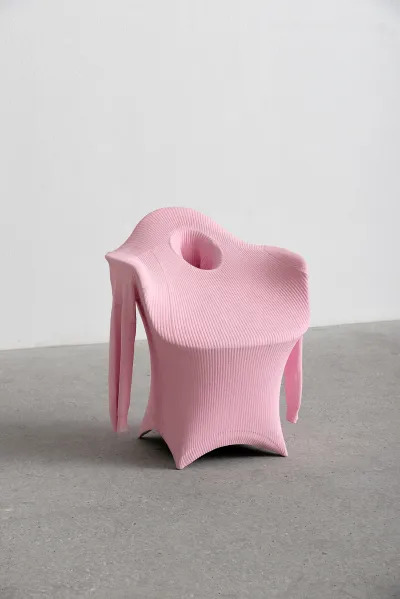
Image Credit: Markus Gradwohl/©Erwin Wurm/Bildrecht, Wien 2024 With Erwin Wurm now moving into his seventh decade, the Albertina is giving him a full-dress retrospective. There will, of course, be the works for which this giant of the Austrian scene is best known, his “One Minute Sculptures,” which call on laypeople to enact brief performances with quotidian objects. These works, like many others by Wurm, question whether art can serve any purpose within the world—and, if the answer is no, whether that matters much at all. Consider that a winking critique of modernism’s obsession with functionalism, or think of it as joke on the pieces’ participants, who often must go through some physical labor to perform nonsense gestures.
September 13, 2024–March 9, 2025
-
“Neïl Beloufa: Humanities” at Renaissance Society, Chicago, and Kunsthalle Basel, Switzerland
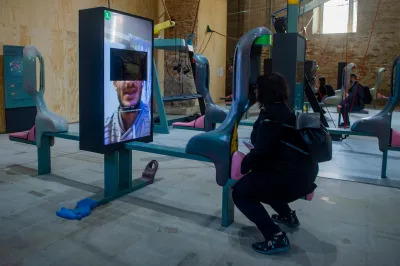
Image Credit: Luca Zanon/Awakening/Getty Images This multi-continental double-header of shows will feature two new bodies of work by an artist whose known for shrewdly taking up the ills of colonialism and capitalism, sometimes with a sci-fi edge. In Chicago, Beloufa will show what the institution describes as a “custom, interactive multimedia system” that will enable each visitor to chart their own rise in the business world. In Basel, there will be works dealing with the concept of financial tombstones, which are issued by companies to publicly advertise transactions.
Renaissance Society: September 14, 2024–November 10, 2024
Kunsthalle Basel: October 4, 2024–January 19, 2025 -
“Knowing the West” at Crystal Bridges Museum of American Art, Bentonville, Arkansas
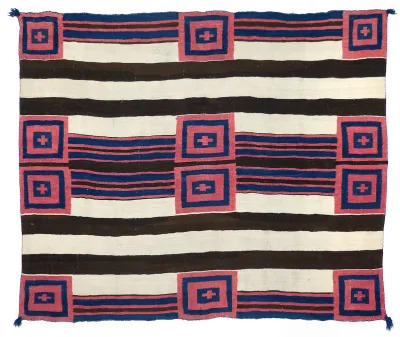
Image Credit: Stephen Lister, Santa Fe, New Mexico/Courtesy Shiprock, Santa Fe. As new attention is paid to violence and racism weathered by Native communities, the American West has come under the microscope, viewed not as a land of possibility but as an area exemplifying the horrors of white-led colonialism. Accordingly, this show about it does not center cowboys and vast vistas but Indigenous art of roughly the past two centuries. Though not exclusively a survey of art by Native Americans, the exhibition puts the focus on figures such as Nellie Two Bear Gates (Gathering of Clouds Woman), whose beaded suitcases produced in the late 19th century testified to interactions between Native people and white cowboys.
September 14, 2024–January 27, 2025
-
“Van Gogh: Poets and Lovers” at National Gallery, London
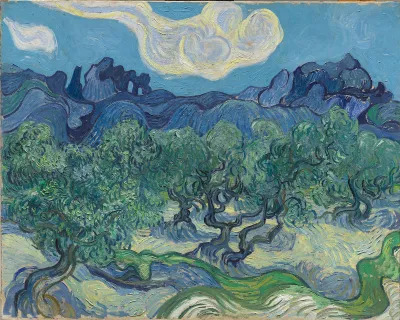
Image Credit: ©The Museum of Modern Art, New York/Scala, Florence There are exactly seven versions of Vincent van Gogh’s Sunflowers (1889), and one of them is a destination point at the National Gallery, which owns it. Now, for a brief period, the institution will be home to a second one, on loan from the Philadelphia Museum of Art for this exhibition. With just 60 works, this show may be on the smaller end for high-profile van Gogh surveys, but what it lacks in size, it makes up for in prestige: its checklist includes well-known still lifes and nightscapes that have made their way from across Europe.
September 14, 2024–January 19, 2025
-
“Breath(e): Toward Climate and Social Justice” at Hammer Museum, Los Angeles

Image Credit: Andrzej Kramarz One of the premier exhibitions of this year’s science-focused, Getty Foundation–funded initiative, PST ART (formerly Pacific Standard Time), this show surveys how 25 artists have used their art to highlight our vulnerable ecology. While its artist list is bedecked with stars (photographer LaToya Ruby Frazier and painter Yoshitomo Nara among them), the focus here is on the unclassifiable and the bizarre. Witness the case of Garnett Puett, a beekeeper by training, who enlists these insects as collaborators for his works known as “apisculptures.” Visitors will be able to interact with those sculptures, along with a garden by Ron Finley and an installation made of debris by Yangkura.
September 14, 2024–January 5, 2025
-
“Life Dances On: Robert Frank in Dialogue” at Museum of Modern Art, New York
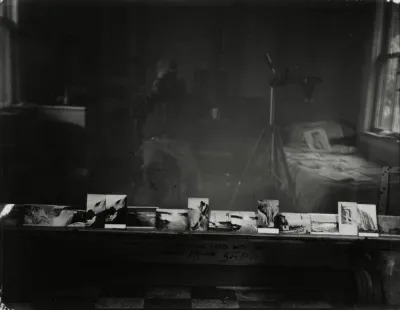
Image Credit: ©2024 The June Leaf and Robert Frank Foundation/Museum of Modern Art Robert Frank’s 1958 photobook The Americans remains a classic because it crystallized a rot in postwar America’s collective consciousness. The book’s pictures, many showing disillusioned people across the country, are the ones most commonly associated with Frank. But he kept working for 60 years after that tome, producing a range of films and photographs that continued to develop the book’s themes. With 200 works on hand, this show seeks to expand the general public’s conception of Frank, focusing specifically on those in his artistic network—among others, his wife, the artist June Leaf, who died earlier this year; his film editor, Laura Israel; and his frequent collaborator, Danny Seymour.
September 15, 2024–January 11, 2025
-
Ming Smith at Various Venues, Columbus, Ohio
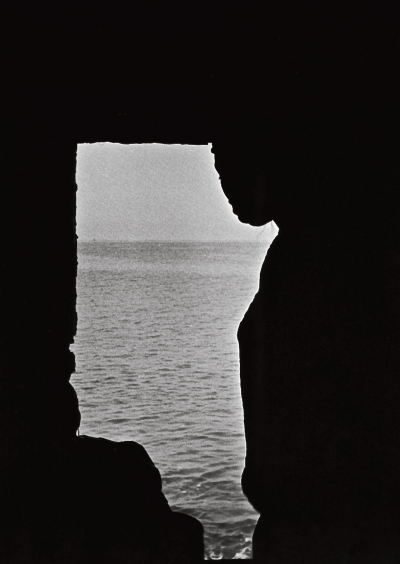
Image Credit: Courtesy Ming Smith Studio Though photographer Ming Smith may typically be associated with New York, a quartet of shows this season—two at the Columbus Museum of Art, as well as one a piece at Wexner Center of the Arts and the Gund—seek to reclaim her as an Ohioan, given that she was raised in Columbus. But geography can hardly contain Smith, who took significant strides for Black female artists like herself, and many of the pictures in these shows were taken far beyond Ohio. The Wexner, for example, is spotlighting some of Smith’s photographs shot in Africa, where she imaged sights seen and people encountered in an unusually high level of darkness that typifies her art.
Columbus Museum: September 19, 2024–January 26, 2025
Wexner: September 22, 2024–January 5, 2025
Gund: Through December 15, 2024 -
“For Dear Life: Art, Medicine, and Disability” at Museum of Contemporary Art, San Diego, California

Image Credit: ©Riva Lehrer/Collection of Michael and Michelle Minns Among the most exciting offerings of this year’s PST ART is this survey of how artists contended with illness and disability, from the 1960s through the Covid pandemic. The 80 artists included take many different approaches to the subject: a Joey Terrill painting featured here offers a visually stunning meditation on living with HIV, while Bob Flanagan and Sheree Rose’s rarely seen Video Coffin (1994), an installation featuring footage of the former inside a casket, sounds a more somber note.
September 19, 2024–February 2, 2024
-
“Radical Software: Women, Art & Computing 1960–1991” at Mudam, Luxembourg
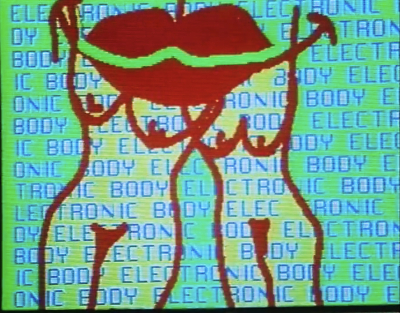
Image Credit: Courtesy Barbara Hammer Estate and KOW, Berlin “The clitoris is a direct line to the matrix,” wrote the art collective VNS Matrix in its famed 1991 manifesto, a text that has been credited with introducing the term “cyberfeminism” to the contemporary lexicon. But even before that, women artists of all stripes—painters, sculptors, filmmakers, and more—had asserted a female claim to computing technology, which some of them believed could induce a new kind of gender parity. This enterprising exhibition surveys that bunch, with the offerings ranging from Ulla Wiggen’s paintings of computer circuitry to Tamiko Thiel’s pioneering digital artworks.
September 20, 2024–February 2, 2025
-
Toronto Biennial of Art
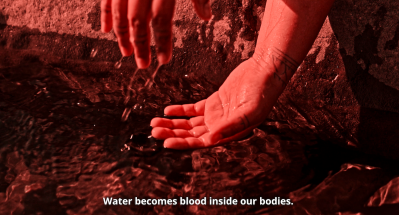
Image Credit: Courtesy the artist Canada is a microcosm of the world writ large in the third edition of this biennial, which considers how the nation’s dark history of colonialism mirrors that of other countries across the globe. Perhaps that sounds dour; curators Dominique Fontaine and Miguel A. López have suggested otherwise. They’ve said their biennial features art that will “conjure sparks that light a fire amidst the fragility of existence.” Works by Ahmed Umar, Cecilia Vicuña, Hangama Amiri, Morehshin Allahyari, Raven Chacon, Sonia Boyce, and others will attest to that premise.
September 21, 2024–December 1, 2024
-
Michael Craig-Martin at Royal Academy of Arts, London
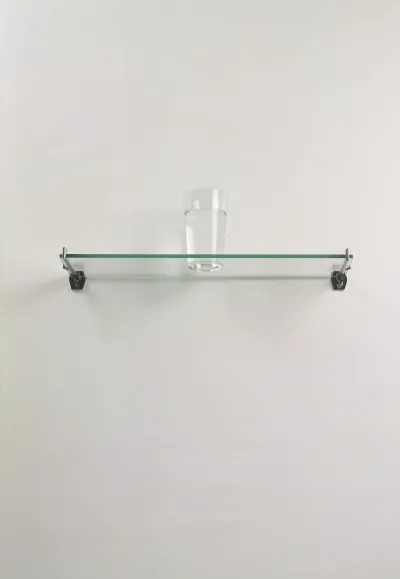
Image Credit: ©Michael Craig-Martin/Courtesy the artist and Gagosian Can a glass of water really be an oak tree? Perhaps, if an artist says so. That, at least, was the suggestion made by a 1973 conceptual art piece by Michael Craig-Martin, whose provocations went on to inspire future shockers by artists such as Damien Hirst, Gary Hume, and Sarah Lucas, all of whom were his students. As his influence continues to be highlighted in British institutions, the Irish artist is getting a proper retrospective that will include his famed conceptual artworks alongside recent paintings that mash together elements borrowed from art historical masterpieces, rendered here in neon green, pink, and red.
September 21, 2024–December 10, 2024
-
“Rotimi Fani-Kayode: Tranquility of Communion” at Wexner Center for the Arts, Columbus, Ohio
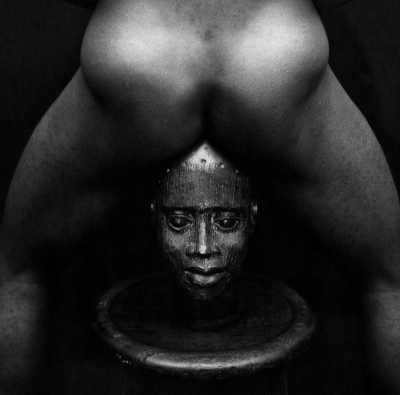
Image Credit: Courtesy Autograph, ABP London Despite his fanbase counting legions of photography historians and Black and queer artists, Rotimi Fani-Kayode has remarkably never received a proper US survey. That will change this season with this show, a 200-work presentation that explores how this Nigerian-born photographer navigated his status as a gay man living in England at a remove from his homeland. His lush portraits, many paying homage to Yoruba lore, often obscure parts of his sitters’ bared bodies or allow their forms to multiply. Fani-Kayode’s point was that the self is an unknowable, mysterious thing, only occasionally coming into focus for seconds at a time.
September 22, 2024–January 5, 2025
-
“Louise Bourgeois: I have been to hell and back. And let me tell you, it was wonderful.” at Mori Art Museum, Tokyo
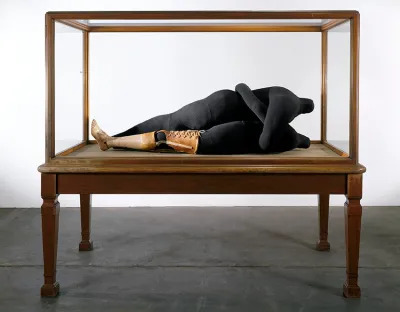
Image Credit: Christopher Burke/The Easton Foundation/Licensed by JASPAR and VAGA at Artists Rights Society (ARS), New York Louise Bourgeois’s is beloved for having transmuted her complex feelings about her father and mother into uncomfortable sculptures hinting at bodily containment. Like good therapists, the curators of this show spend their time here mapping out Bourgeois’s tortured family dynamics, suggesting her career as an arc from repression to liberation. The exhibition’s selection of 100 works—from early paintings to examples of the late-career spider sculptures—peels back some of the psychological mystique that surrounds Bourgeois, whose life story continues to provide plenty of intrigue more than a decade after her passing.
September 25, 2024–January 19, 2025
-
“Edges of Ailey” at Whitney Museum, New York
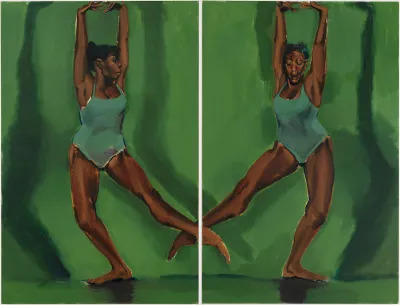
Image Credit: Courtesy the artist, Corvi-Mora, London, and Jack Shainman Gallery, New York Might we be experiencing a renaissance of dance-oriented museum shows? Following surveys devoted to the Judson Dance Theater at MoMA and Simone Forti at the Museum of Contemporary Art in Los Angeles, there is now this expansive show about choreography Alvin Ailey, who launched an iconic dance company in his name that is still active today. The sprawling exhibition has been afforded all 18,000 square feet of the Whitney’s fifth floor, and while there will be paintings and sculptures on offer there, by the likes of Faith Ringgold, Kevin Beasley, Lynette Yiadom-Boakye, and many more, the main attraction will be performances staged two floors beneath. In that space, choreographers and artists ranging from Bill T. Jones to Okwui Okpokwasili will create works that pay homage to Ailey, whose dances memorably merged the centuries-old traditions of ballet with modern dance and contemporary Black culture.
September 25, 2024–February 9, 2025
-
“Soledad Sevilla: Rhythms, Grids, Variables” at Museo Reina Sofía, Madrid
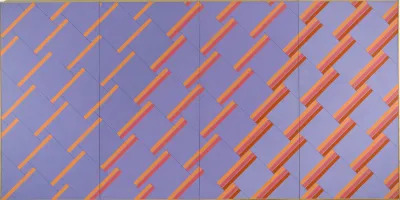
Image Credit: ©Soledad Sevilla/VEGAP, Madrid/Museo Reina Sofía The last time Soledad Sevilla showed at the Reina Sofía, in 2012, she covered the glass walls of its Palacio de Cristal with polycarbonate panels, altering this famed space by causing it to appear blue. More than a decade on, this Spanish painter has returned, this time for a survey of her work more broadly, which has subjected abstraction to rigorous geometries. During the ’60s, while many of her colleagues were experimenting with irregular pours and dribbles of paint, Sevilla was using computers to produce her art; she later moved in an analog direction, though she continued to rely upon rule sets, resulting in what she has called “rational abstraction.” Alongside a selection of more than 100 of these works, Sevilla will debut a new installation made of cotton thread.
September 25, 2024–March 10, 2025
-
“Tao Hui: In the Land Beyond Living” at Tai Kwun Contemporary Art Centre, Hong Kong
This young Chinese artist has gained a reputation for making incisive video art about alienation and capitalism, often in ways more mystifying than outright dour. Recent works have drawn upon the fast-paced, meme-friendly styles seen on TikTok. His 2023 video Hardworking, for example, is displayed on an iPhone-shaped screen that slopes onto the floor and features a saleswoman who repeatedly tries to peddle products, all while digital effects surround her. That work, along with several new commissions, appears in this show, which is among this rising star’s most high-profile exhibitions to date in Asia.
September 26, 2024–February 2, 2025
-
“Helen Frankenthaler: Painting Without Rules” at Palazzo Strozzi, Florence
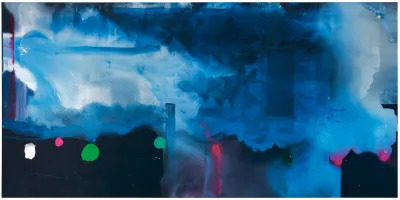
Image Credit: ©Helen Frankenthaler Foundation/Artists Rights Society (ARS), New York Helen Frankenthaler did not so much paint on canvas as she did in canvas, soaking and staining her colors to create faint blooms of pink and blue. That unusual technique caused her to stand out in the (largely male) field of Abstract Expressionists, and it has continued to place her at the forefront of the movement in the years since. Perhaps owing to her nationality, Americans have seen far more sizable Frankenthaler shows than Europeans. That makes this modestly scaled sampler of her art major among the few high-quality shows staged on the continent in recent years.
September 27, 2024–January 26, 2025
-
“Electric Op” at Buffalo AKG Art Gallery, New York
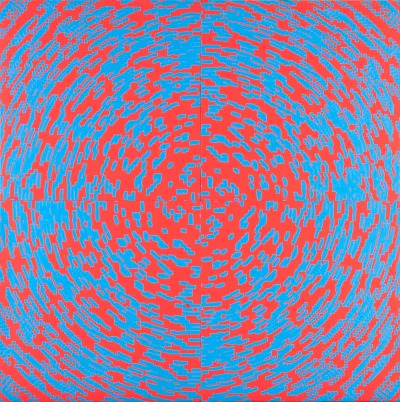
Image Credit: ©Estate of François Morellet/Artists Rights Society (ARS), New York/Photo: ©The Museum of Modern Art/Licensed by SCALA/Art Resource, New York Op art, the 1960s movement known for its warping abstractions, is generally seen as an attempt to muck with viewers’ sense of perception, demanding onlookers to see paintings and sculptures with their minds as well as their eyes. But what if Op was also about making art become like new machinery? That’s the thesis of this survey, which suggests that Op’s foremost adherents—Carlos Cruz-Diez, Bridget Riley, and Victor Vasarely, among others—may have been thinking through the rise of video and a multitude of screens in their art. To make the point, the show also lures in post-Op art, from computer-oriented pieces by Vera Molnár and Zdenek Sýkora to digital art by Leo Villareal and Casey Reas.
September 27, 2024–January 27, 2025
-
“Paula Rego: Power Games” at Kunstmuseum Basel, Switzerland
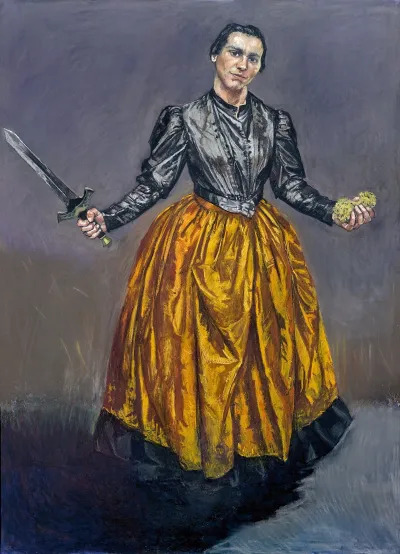
Image Credit: ©2024Paula Rego, all rights reserved/Bridgeman Images/CAM-Centro de Arte Moderna Gulbenkian, Lisbon Angel (1998), one of Paula Rego’s most famous works, features the artist’s muse Lila Nunes posing as a divine being brandishing a sword and a sponge. The piece concluded a series of pastels that Rego made to protest Portugal’s oppressive laws regarding abortion, with this angel present to “punish everyone” who’d contributed to that culture. Rego has justly earned international attention for works such as these, which enlist images borrowed from fairy tales and religious scenes, then reposition them to speak to imbalanced gender dynamics and violence committed by conservative regimes. The biggest Rego show since her death in 2022 will feature Angel as well as 120 other works that show how this gimlet-eyed artist pushed back against power structures.
September 28, 2024–February 2, 2025
-
Thomas Schütte at Museum of Modern Art, New York
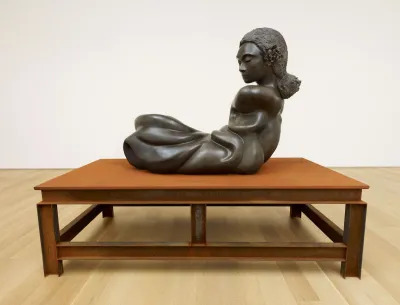
Image Credit: ©2024 Thomas Schütte/Artists Rights Society (ARS), New York/Photo Art Institute of Chicago/Art Resource, New York/Art Institute of Chicago A Pringle balanced on a matchbox, sculptures of grotesque men entangled with each other, a column with two cherries on top: Thomas Schütte has done it all and then some, working in no signature style along the way. That makes the MoMA retrospective for this celebrated German sculptor a prime opportunity to take stock of his diverse oeuvre. Despite having won the Venice Biennale’s Golden Lion award and having received big shows of this sort abroad, his art has never been seen in such a large quantity on US soil. His MoMA show aims to fix that.
September 29, 2024–January 18, 2025
-
“Lygia Clark: The I and the You” at Whitechapel Gallery, London
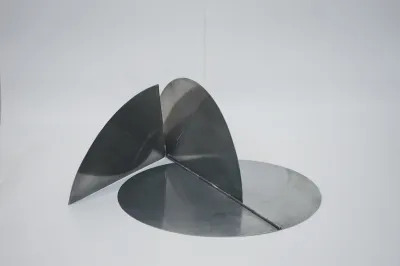
Image Credit: Caroline Abaurre Valansi/Courtesy Associacão Cultural O Mundo de Lygia Clark Are we on the verge of a Lygia Clark–aissance in Europe? It certainly seems that way, given that there are two retrospectives due to open in the continent within the next year alone. The first alights at the Whitechapel Gallery, which has brought on a curatorial team that includes Golden Lion–winning artist Sonia Boyce to consider the Brazilian Neo-Concretist. During the 1950s, Clark devised a groundbreaking group of folding sculptures that encouraged viewer participation. Then, in the decade afterward, she brought her work into the public sphere, creating performances that broke art free from the elite institutions that had long held it. Rather than merely presenting those pieces via documentation, the Whitechapel Gallery will reanimate these performances regularly throughout the show, ensuring that Clark’s uncontainable energy remains present more than 30 year after her death.
October 2, 2024–January 12, 2025
-
“Paulo Nazareth: Luzia” at Museo Tamayo, Mexico City
In 1974, an 11,500-year-old skeleton was discovered in a Brazilian rock shelter. She was subsequently given the name Luzia, and she was discovered to have shared genetic material with Indigenous Australians. In 2020, seeking to exhume the full breadth of her lineage, Brazilian artist Paulo Nazareth began charting Luzia’s history using found objects, which he assembled as a means of charting those that came before her. Part scientific inquiry and part speculative conceptual art project, this grouping of works will be the primary focus of his first exhibition in Mexico, yet another attempt by Nazareth to show how borders rarely contain people from moving beyond them.
October 3, 2024–February 9, 2025
-
“Lauren Halsey: emajendat” at Serpentine Galleries, London
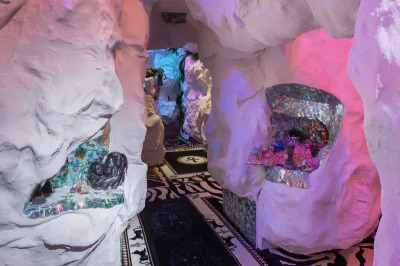
Image Credit: Zak Kelley/©Lauren Halsey/Courtesy the artist and The Museum of Contemporary Art, Los Angeles The distant past, the immediate present, and the near future merge in Lauren Halsey’s sprawling installations, which mix styles derived from ancient Egypt with appropriated images related to South Central, the Los Angeles neighborhood the artist calls home. In the past decade, these installations featuring carved columns, clipped pictures, found ephemera, and more have won her acclaim in the US; now, her international influence is expanding, with new sculptures featured prominently at the Venice Biennale. Her Serpentine commission, one of her grandest projects to date, will see her install a faux garden within the museum’s galleries, which are also set to feature objects Halsey gained from South Central residents.
October 4, 2024–March 2, 2025
-
“The ’70s Lens: Reimagining Documentary Photography” at National Gallery of Art, Washington, D.C.
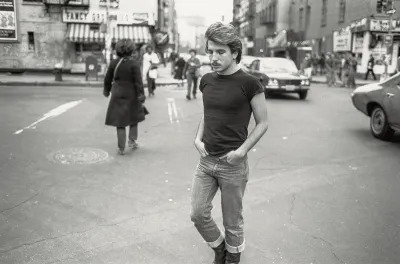
Image Credit: ©Sunil Gupta/National Gallery of Art Documentary photography is commonly thought to be a truth-telling form of picture-making, but the 1970s, a decade marked by widespread distrust of power, demanded that the genre evolve. This 100-work survey explores that shift. Traditional documentary photographs abound—Helen Levitt, Larry Fink, and Anthony Hernandez will feature here—but so too do more conceptual works that present lies to viewers. Take the case of Tseng Kwong Chi, whose photographs involved the artist wearing a Mao suit and venturing out into public, allowing people to decide for themselves how to engage with his concocted persona.
October 6, 2024–April 6, 2025
-
“Caillebotte: Painting Men” at Musée d’Orsay, Paris
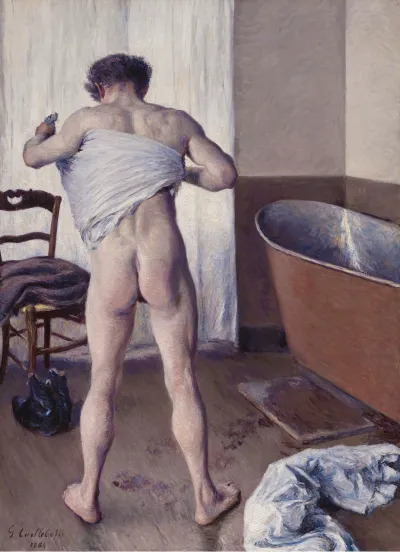
Image Credit: ©2024 Museum of Fine Arts, Boston In Gustave Caillebotte’s paintings, men are pictured doing a vast number of activities: walking dogs, scraping floors, rowing boats, gazing at boulevards on balconies, looking forlornly at trains. That he so often focused on men is not a coincidence, according to this show, which theorizes that the French Impressionist took an active role in recasting masculinity for the modern age. Though the show is notable for grouping dozens of his 19th-century canvases in one space, it is also significant for examining Caillebotte’s biography through the lens of gender, paying mind to the fact that he remained single at a time when this was unusual for a wealthy Parisian male.
October 8, 2024–January 19, 2025
-
“Arte Povera” at Bourse de Commerce, Paris
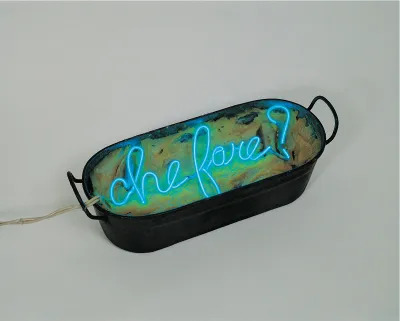
Image Credit: ©Adagp, Paris, 2024/GAM – Galleria Civica d’Arte Moderna e Contemporanea, Turin)/Fondazione Guido ed Ettore De Fornari Of all the various avant-gardes that sprung up in postwar Europe, Arte Povera must rank among the strangest. Its purveyors, who worked in Italy in the 1960s, made oddball sculptural installations that combined organic elements—branches, horses, water—with industrial materials, suggesting that nature had been profoundly reshaped following World War II. Celebrity curator Carolyn Christov-Bakargiev, newly retired from her post as director of the Castello di Rivoli in Turin, charts the movement anew here. She is set to focus specifically on 13 artists, among them Mario and Marisa Merz, Michelangelo Pistoletto, and Pino Pascali, the subject of a recent retrospective at the Fondazione Prada in Milan.
October 9, 2024–January 20, 2025
-
Mire Lee at Tate Modern, London
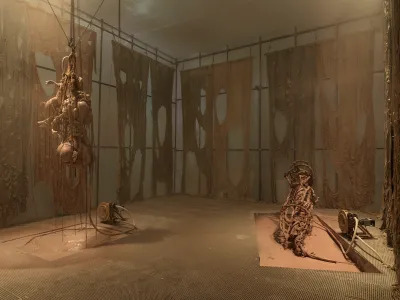
Image Credit: Photo Dario Lasagni/Courtesy New Museum This South Korean–born phenomenon makes large sculptures that are horrifying, disgusting, and visually resplendent all in one. Those squelchy works, which are often outfitted with mechanized elements, have channeled mystifying psychological states and envisioned indefinable bodies, and they have been a hit at biennials, from Venice to Busan. Her latest work, a commission for Tate Modern’s cavernous Turbine Hall, looks to continue her international rise.
October 9, 2024–March 16, 2025
-
“Marina Abramović: Transforming Energy” at Modern Art Museum, Shanghai
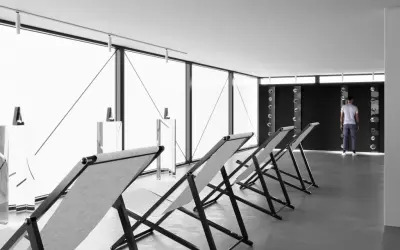
Image Credit: Courtesy MAM Shanghai Will crystals heal us? Marina Abramović certainly thinks so. The performance artist has said that hematite, quartz, and tourmaline have “medical property, scientific property and energy property,” and she’s determined to show it in her biggest exhibition to date, which includes sculptures known as “Transitory Objects” that collectively feature 6,600 pounds of minerals. Viewers can interact with these objects and, hopefully, gain some spiritual fulfillment from them. Perhaps, too, they’ll come away with a new understanding of Abramović’s less warm performance art, for which the artist has subjected her body to painful situations.
October 10, 2024–February 28, 2025
-
“Charles Atlas: About Time” at Institute of Contemporary Art, Boston

Image Credit: ©Charles Atlas/Courtesy the artist and Luhring Augustine, New York This video art giant has never been one for traditional gestures—his 2018 video installation The Years, an assortment of past works about queer culture and dance arranged to look like gravestones in a cemetery, was conceived as a retrospective unto itself. Therefore, do not expect this 125-work show to be your average Charles Atlas survey. Conceived as an immersive grouping of installations, the show culminates in the debut of a new work featuring video portraits of artists such as Marina Abramović, John Waters, Lady Bunny, and Yvonne Rainer.
October 10, 2024–March 16, 2025
-
La Trienal at El Museo del Barrio, New York

Image Credit: Courtesy the artist and Garth Greenan This recurring survey of Latinx art is back for a second edition, after the first, focused specifically on the US and Puerto Rico, debuted in 2021. This time, though, the geographic purview has been expanded, so that now, artists from the Americas, Asia, Europe, and the Caribbean will figure here. Alongside rising talents based in this country, from Ser Serpas to Alina Perez, there will be artists to watch from far abroad, such as Noberto Roldan, a Filipino known for his vast assemblages contending with forces of globalization.
October 10, 2024–February 9, 2025
-
“Nástio Mosquito: King of Klowns” at M HKA, Antwerp
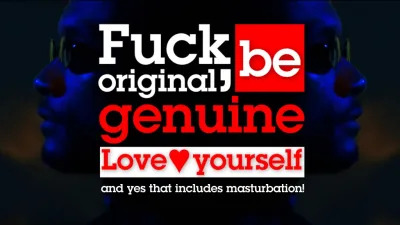
Image Credit: Courtesy the artist “I don’t want to make this shit about irony. I don’t want to make shit about sarcasm,” Nástio Mosquito once said, referring to the fact that he was not so interested in postmodern strategies, since he didn’t have a formal art education. Perhaps fittingly, his work is characterized by an unusual directness. It is sex-positive, anti-colonial, and generally pretty uproarious, taking the form of performances, poetry, videos, and more with a comic edge. It’s a lot of art to wrangle, and in many different styles, too; the Angolan-born artist’s first major museum survey in Belgium, the country where he is now based, allows viewers to take stock of it all.
October 11, 2024–January 26, 2025
-
“Tacita Dean: Blind Folly” at Menil Collection, Houston
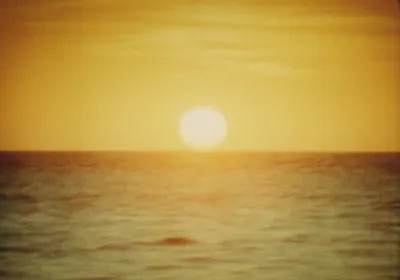
Image Credit: ©Tacita Dean/Courtesy the artist, Frith Street Gallery, London, and Marian Goodman Gallery, New York, Paris, and Los Angeles Tacita Dean may be best known for slowly paced 16mm films that contemplate landscapes and others’ artworks—decidedly analog gestures in our sped-up digital moment. But the focus in this show, the British artist’s most high-profile museum show in the US to date, will be on her drawings, prints, and sculptures, all of which further her films’ quest to visualize the passage of time. Alongside some of her moving-image works, there will also be her tree “portraits,” photographs of flowering plants, many printed at a monumental scale, that Dean augments her own drawn marks.
October 11, 2024–April 20, 2025
-
“Carol Rama: A Rebel of Modernity” at Schirn Kunsthalle, Frankfurt
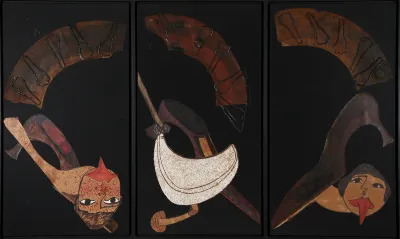
Image Credit: Henry Trumble/©Archivio Carol Rama, Turin/Private Collection Artists who do not fit neatly into the art historical rubric of a given moment tend to slip through the cracks, and that may explain why Carol Rama was never canonized during her day. Her paintings of crowned women, people fornicating with animals, and fecal-looking splatters did an excellent job of breaking taboos, but they certainly did not conform to Arte Povera or any dominant movements in Italy, where she was based. They have, however, found an international audience following her death in 2015, and with this show, her first big survey in Germany, her following is poised to grown even more.
October 11, 2024–February 2, 2025
-
Tamara de Lempicka at de Young Museum
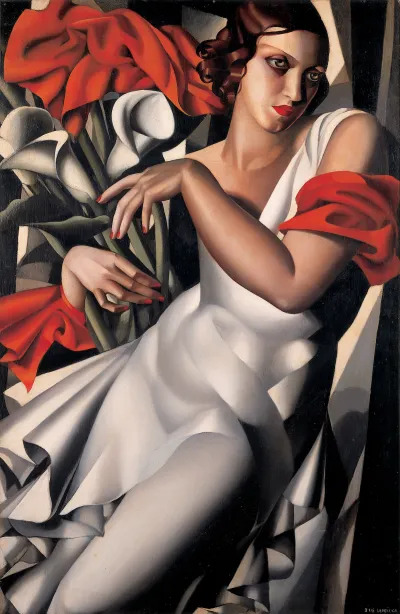
Image Credit: ©2024 Tamara de Lempicka Estate, LLC/ADAGP, Paris/Artists Rights Society (ARS), New York/©1969 Christie’s Images Limited During the 1920s, Tamara de Lempicka was among the artists involved in the epic project of crafting the “New Woman,” a female persona that suited the fast-changing modern times. This Polish-born painter contributed canvases featuring modish women riding in cars and posing before urban metropolises, her subjects’ skin rendered using an off-kilter sheen that sometimes mirrored the machines pictured. Though some critics have labeled her art kitsch, Lempicka’s art has earned some avid admirers, among them the pop star Madonna, who has collected the artist’s work. Finally, more than four decades after her death, Lempicka is receiving a scholarly retrospective in the United States, where she worked for a majority of her career. Lempicka, a recent Broadway musical that played up the artist’s liberated sexuality and lifestyle, was a notorious flop; this much-anticipated show is likely not to suffer the same fate.
October 12, 2024–February 9, 2025
-
“Fluxus and Beyond: Ursula Burghardt, Benjamin Patterson” at Museum Ludwig, Cologne, Germany

Image Credit: ©Nachlass Ursula Burghardt/Kulturstiftung Sachsen-Anhalt, Kunstmuseum Moritzburg Halle (Saale) The two artists surveyed here have largely been considered secondary figures in the history of Fluxus, the 1960s movement that claimed everyday objects as the stuff of art, and unjustly so. The exhibition suggests that their identities played a role. Ursula Burghardt, who made slight alterations to trinkets and offered them as her sculptures, was a Jewish German; Benjamin Patterson, whose unconventional music sometimes invited audience participation, was a Black American. While both were well-known to Fluxus-affiliated artists (Patterson was even vocally acclaimed by Nam June Paik), neither is quite so widely recognized today. This exhibition may change that.
October 12, 2024–February 9, 2025
-
Tarek Atoui at Kunsthaus Bregenz, Austria
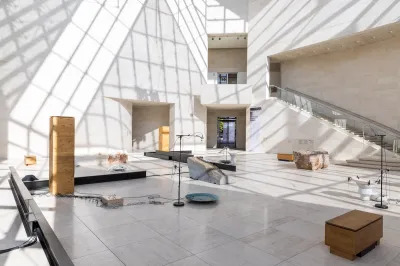
Image Credit: Eike Walkenhorst/©Tarek Atoui/Courtesy the artist Much of Tarek Atoui’s art is devoted to the production of surprising sounds. Those sounds emanate not from conventional instruments but from places and objects of Atoui’s own making. These unusual artworks have all asked a perplexing question: Which peoples, and what objects, deserve to be heard, and how? The subject of his latest work is being kept under wraps, but the Kunsthaus Bregenz has tantalizingly teased the project by noting that its spaces are acoustically sensitive, meaning that visitors should keep their ears peeled.
October 12, 2024–January 12, 2025
-
Olga de Amaral at Fondation Cartier pour l’art contemporain, Paris
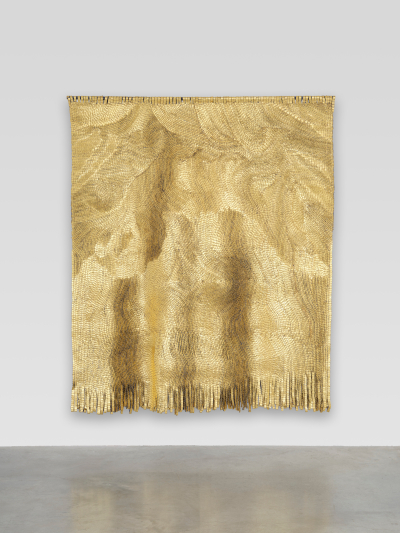
Image Credit: ©Olga de Amaral/Courtesy Lisson Gallery Textile artist Olga de Amaral weaves rich abstractions that translate the look of modernist painting into fiber, with her gorgeously hued threads even sometimes allowed to hang loose, creating sculptural installations that can be seen from multiple angles. Even in a time when fiber art has become pervasive in the institutions that once shunned it, this nonagenarian’s work stands out. The Colombian artist’s first retrospective in Europe will feature decades’ worth of art paying homage to pre-Columbian traditions and centuries-old handicrafts.
October 12, 2024–March 16, 2025
-
“Siena: The Rise of Painting, 1300–1350” at Metropolitan Museum of Art, New York
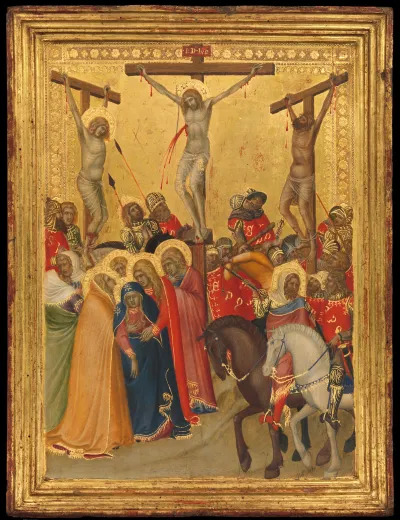
Image Credit: Metropolitan Museum of Art Just about every Art History 101 course tends to place due emphasis on the explosion of creativity that occurred in Florence and birthed the Renaissance during the 15th century. But this blockbuster exhibition suggests that none of that would have been possible were it not for 14th-century Siena, where a group of painters set painting in a new direction by shearing Christian imagery of the staid styles associated with Medieval art. Duccio, for his part, began using egg tempera and gold leaf, and started painting figures that contained greater depth, like the humans that appeared in real life. His famed Madonna and Child (ca. 1290–1300), featuring the Christ Child playfully tugging at his mother’s veil, features here alongside works by Simone Martini, Ambrogio Lorenzetti, and others in this jewel-box blockbuster, which heads to London’s National Gallery following its appearance in New York.
October 13, 2024–January 26, 2025
-
“Figures du Fou: Du Moyen Age aux Romantiques” at Louvre, Paris
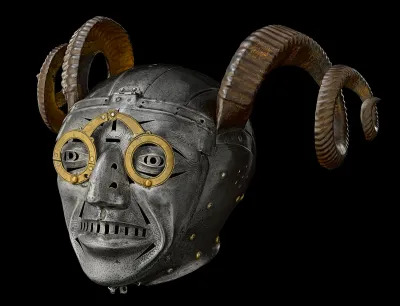
Image Credit: ©Royal Armouries Museum Should Todd Phillips’s Joker: Folie à Deux (out October 4) leave you wanting more, there is this sprawling survey focused on the figure of the madman in artworks dating from between the 13th and 19th centuries. The expressions of insanity that figure here are not all so dour as Joker, however: some focus on love and passion, others on religious ecstasy, and still others on madness as a logical response to a culture obsessed with reason. Craziness takes many forms here, and so too do the artworks included, which include illuminated manuscripts, oil paintings, engravings, and more.
October 16, 2024–February 3, 2025
-
“Pop Forever, Tom Wesselmann & …” at Fondation Louis Vuitton, Paris
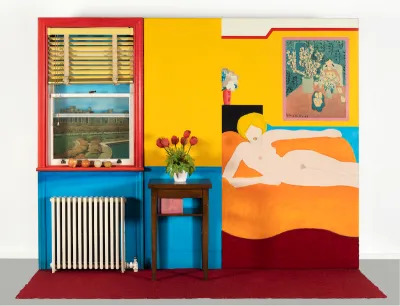
Image Credit: ©2024 Adagp, Paris/© Primae/Louis Bourjac/Courtesy Fondation Louis Vuitton This mega-exhibition may sound like yet another retrospective for Tom Wesselmann, the Pop artist known for his paintings of sprawled-out nude women and domestic interiors stuffed with consumerist goods. Wesselmann fans, fear not: there are 150 pieces by the artist on hand here. But the show is more than Wesselmann, with another 70 works by 35 other artists whose work the curators have tied to his. Some of those pieces are critical of Wesselmann’s famed and famously polarizing “Great American Nude” paintings. Derrick Adams and Mickalene Thomas, for example, similarly portray odalisques, but theirs are focused on Black models. Seen in the context of Wesselmann’s paintings, the tenderness of Adams and Thomas’s gazes will become apparent.
October 16, 2024–February 24, 2025
-
“Malala Andrialavidrazana: Figures” at Palais de Tokyo, Paris
Since 2015, Malala Andrialavidrazana has been working on the series “Figures,” for which the Madagascar-born French artist mashes together pieces of maps, colonial paintings, currency, scientific diagrams, and more. The results are expansive, maximal photomontages that are intended to chart the world without a colonialist perspective. The sweeping ambition of these pieces may be one reason the Palais de Tokyo chose to award Andrialavidrazana its biggest space: a gallery whose 196-foot-long walls she will cover with preexisting “Figures” works that she will enlarge to a new, epic proportions.
October 17, 2024–January 5, 2025
-
“Silhouettes in the Undergrowth” at Museo Jumex, Mexico City

Image Credit: ©Ana Mendieta/Artists Rights Society (ARS), New York/SOMAAP, Mexico, 2024/Colleccion Jumex, Mexico Starting in 1973, Ana Mendieta began to visit sites in Iowa and Mexico, and scrawl an abstracted female form into the landscape. Sometimes, she set this form on fire; in other instances, she left it to disappear as it was exposed to the elements. For her, the series, known as the “Siluetas,” became a way to imply an intimate connection between the land and the body, a project taken up in the intervening decades by a range of other Latin American women artists, five of whom appear alongside the late Mendieta in this show. Among them are Frieda Toranzo Jaeger, a young Mexican-born artist whose paintings have featured women arrayed in verdant nature, where they party and have sex alongside seemingly disused car parts.
October 17, 2024–January 5, 2025
-
“Medardo Rosso: Inventing Modern Sculpture” at mumok, Vienna
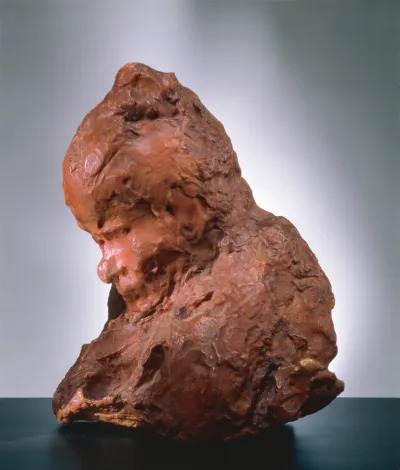
Image Credit: Courtesy Sammlung PCC The title of this exhibition stakes a bold claim for Medardo Rosso, a sculptor who made a solid contribution to 19th-century art with his lumpy sculptures of expressive faces. Perhaps these works, made using a lost-wax casting technique more often associated with classical sculpture, are nowhere so transgressive as what followed them—they seem aesthetically conservative compared to the abstract sculptures European modernists produced thereafter. But the show places dozens of Rosso’s sculptures alongside more recent pieces by Jasper Johns, Phyllida Barlow, and Eva Hesse to prove that his work had lasting power, no matter how easy it may be to toss it off today.
October 18, 2024–February 23, 2025
-
Everlyn Nicodemus at National Galleries of Scotland, Edinburgh
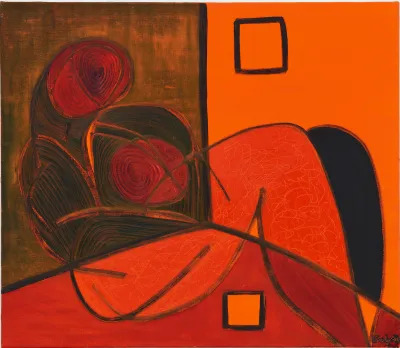
Image Credit: Courtesy Richard Saltoun Gallery, London, Rome, and New York Most self-portraits depict exactly one head—the artist’s—but Everlyn Nicodemus’s from 1982 contains five faces, all apparently belonging to the same body. Each of those faces looks a bit like Nicodemus. Her point with this work, the first by a Black woman to enter the collection of London’s National Portrait Gallery, was that the self is not always so easy to define, especially when one is diasporic like Nicodemus, a Tanzanian-born painter who has resided in Sweden, France, and Belgium. For the past 15 years, this influential artist has been tackling the aftermath of colonialism and the intricacies of Black identity from her studio in Edinburgh. At long last, she gets her first-ever retrospective; fittingly, it’s being held within the city she now calls home.
October 19, 2024–May 25, 2025
-
“Sophie Calle: Overshare” at Walker Art Center, Minneapolis
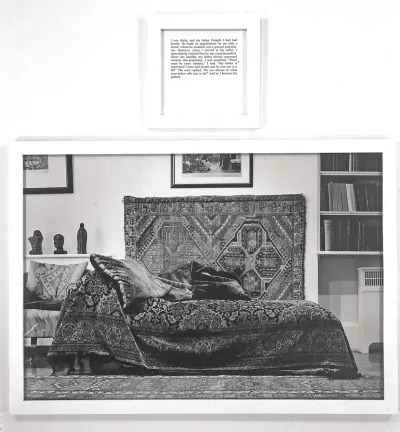
Image Credit: ©2024 Sophie Calle/Artists Rights Society (ARS), New York/ADAGP, Paris/Courtesy Paula Cooper Gallery/Collection of Paula Cooper, New York The titular verb in this retrospective’s title is a reference to French artist Sophie Calle’s unique ability to leave nothing to the imagination. In her conceptual projects of the past few decades, she has regularly invaded people’s privacy—taking up a job as a hotel maid in order to rifle through people’s belongings in one famous project, and following a male stranger and documenting her travails for another. Her photographs, installations, and more will be assembled for her most comprehensive US museum show to date. It’s a homecoming of sorts for Calle, who, working on commission for a Minneapolis bank, once clandestinely photographed people withdrawing from an ATM for a project called Cash Machine (1991–2003).
October 26, 2024–January 26, 2025
-
“Steina: Playback” at MIT List Visual Arts Center, Cambridge, Massachusetts
Steina’s name may hardly be a household one, but to video-art enthusiasts, she is an icon, having produced key tapes that explore the flow of time and the landscapes of Iceland and New Mexico, her birth country and her current home state, respectively. To properly encapsulate the octogenarian’s output is just about impossible, given the many forms it has taken. She cofounded the Kitchen, the New York art center that has fostered generations of media and performance artists, and she often worked collaboratively with her husband, the late Woody Vasulka. But this retrospective endeavors to try—and is likely to bring Steina wider recognition.
October 26, 2024–January 15, 2025
-
René Magritte at Art Gallery of New South Wales, Sydney
Walk into any of the biggest modern art museums of Western Europe and the US, and you won’t have to go far to find a painting by René Magritte, the Belgian Surrealist known for depicting floating boulders, pipes that aren’t pipes, and canvases that shatter as though they were made of glass. Many of these famed works are located thousands of miles away from Australia, which is why this show, billed as his first retrospective ever on the continent, is being treated as such an event. One of the works making the trek for the occasion is the Museum of Modern Art’s The False Mirror (1929), in which the iris of an eye is replaced with a cloudy sky.
October 26, 2024–February 9, 2025
-
“Ei Arakawa-Nash: Paintings Are Popstars” at National Art Center, Tokyo
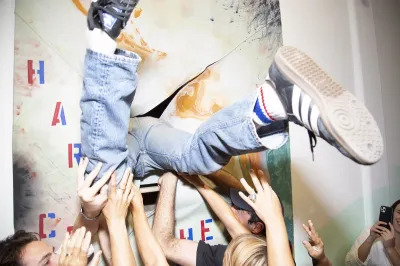
Image Credit: Santiago Felipe/Courtesy the artist and David Zwirner, New York While Ei Arakawa-Nash is best known for performance art, much of his work has involved painting, a medium that has historically been largely about the final product, not the process of making it. The beauty of Arakawa-Nash’s art is that it shows that painting can be similar to performance art for those willing to view it that way: he has had people dance around paintings and even flung a person through a canvas. He is set to feature live performance art alongside painting once more with this show, which will include works by Oscar Murillo, Leidy Churchman, Trevor Shimizu, and more alongside events of Arakawa-Nash’s making. “This exhibition will definitely come only once in my life,” the artist said in a statement. “Please let me deliver it to you with a playful attitude.”
October 30, 2024–December 16, 2024
-
“Salvo: Arrivare in tempo” at Pinacoteca Agnelli, Turin

Image Credit: Cristina Leoncini, Turin/Courtesy In Arco Gallery Salvo’s colorful paintings of landscapes lined with bulbous trees and squat houses made him an outlier during his day, but this Italian artist has received a surge of interest in recent years, with his one of his canvases selling for over $1 million last year at Christie’s. Here comes the biggest exhibition ever afforded to him—in Turin, the city he called home, no less—to prove that he is more than just a market phenomenon. The show seeks to prove that even though Salvo may have had a light touch, he had big ideas on the brain, with a special interest in how a contemporary artist could reinvent historical genres for new eras.
October 31, 2024–May 24, 2025
-
“Meriem Bennani: For My Best Family” at Fondazione Prada, Milan
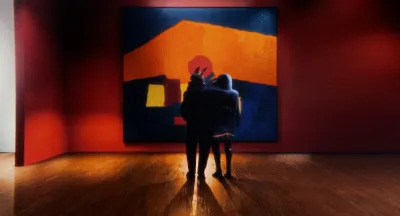
Image Credit: Courtesy the artists During the first lockdown, in 2020, Meriem Bennani and her collaborator Orian Barki charmed audiences worldwide with 2 Lizards, a grouping of videos posted to Instagram that featured computer-generated animals navigating a Covid-altered New York. Bennani and Barki are set to enchant once more with a new film, titled For Aicha, whose protagonist is a 35-year-old jackal named Bouchra who has acquired the ability to make movies. That work will be complemented by a fresh installation by Bennani composed of hundreds of flip flops; the shoes will be moved about by a machine, causing them to hit objects around them and produce a symphony of sound.
October 31, 2024–February 24, 2025
-
“MANZAR: Art and Architecture from Pakistan 1940s to Today” at National Museum of Qatar
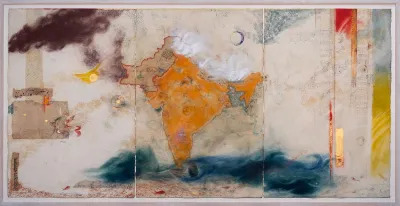
Image Credit: Courtesy the artist With around 200 works included, this epic exhibition charts Pakistan’s art scene roughly from the time of Partition onward, attesting to a wealth of experimentation conducted along the way. Some artists, like Imran Qureshi and Shahzia Sikander, have remixed traditional styles like miniature painting and made them new—something made literal by Amin Gulgee, who will here recreate a Mughal garden with a contemporary twist. Others, like Lala Rukh and Salima Hashmi, have dealt with Pakistan’s present, taking up issues like women’s rights and nuclear disarmament. Across all these pieces, these artists attempt to envision the future of Pakistan, a nation that has experienced tumult since gaining independence in 1947.
November 1, 2024–January 31, 2025
-
Prospect New Orleans
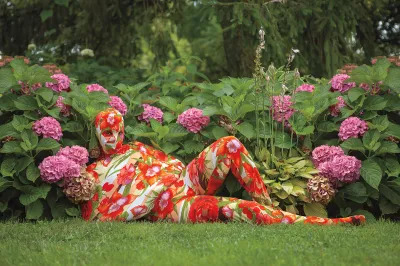
Image Credit: Courtesy the artist All biennial-style exhibitions are saddled with the possibility of becoming parachute-in shows: curators and artists spend a brief period engaging with a specific locale, then depart once they’re done and never look back. Curator Miranda Lash and artist Ebony G. Patterson, the organizers of this year’s Prospect New Orleans triennial, have actively sought to avoid that quagmire with a show that they say asks: “What does it mean to ‘hold’ a city, a gesture that suggests care and reverence?” Works by Teresa Baker, Bethany Collins, Cathy Lu, Karyn Olivier, Stephanie Syjuco, Joiri Minaya, and more may offer some answers.
November 2, 2024–February 2, 2025
-
“Seeing Is Believing: the art and influence of Gérôme” at Mathaf, Qatar

Image Credit: Lusail Museum Of all the 19th-century French painters credited with doing something new, Jean-Léon Gérôme may not have the greatest name recognition, even though his paintings have influenced the way many white Westerners conceive of North Africa and the Middle East. His canvases showing snake charmers, encampments in Egypt, and enslaved people seduced Europeans of his day with alluring, eroticized, and casually racist visions of lands largely unknown to them. In recent decades, this has all made these works ripe for critique, with Edward Said even famously plastering one such Gérôme painting across the cover of his 1978 book Orientalism. Gérôme was born 200 years ago, but he is not exactly getting a birthday celebration with this mega-exhibition, whose 400 works—some by him, some not—show how the artist crafted negative stereotypes that continue to pervade Western culture.
November 2, 2024–February 22, 2025
-
“Harmony and Dissonance: Orphism in Paris, 1910–1930” at Guggenheim Museum, New York
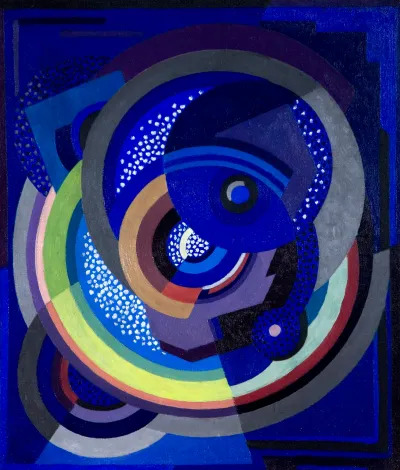
Image Credit: National Museums NI, Ulster Museum Collection, Northern Ireland Of all the –isms of the early 20th century known to the general public, Orphism is not likely to rank highly for name recognition. The Guggenheim aspires to change that with this big survey devoted to the movement, which upheld color as a primary means of experimentation, even as contemporaneous movements like Cubism opted largely for blacks, whites, and grays. The twinkling compositions that resulted—the whirling abstractions of František Kupka, the prismatic orbs painted by Sonia Delaunay—charm the eye with their bold palettes, which will provide plenty of excitement in this museum’s predominantly white interior.
November 8, 2024–March 9, 2025
-
Renata Lucas at Pinacoteca de São Paulo
In 2010, Renata Lucas tilted the sidewalk of a Berlin street exactly 7.5 degrees, forcing a circular swatch of the walkway to lead into a wall. The project typified this Brazilian artist’s practice, which has sought to create interruptions in the way people view and move through spaces. By turns humorous and slightly menacing, her interventions break down the reigning sense of order that guides daily life. For that reason, her biggest survey to date in her home country ought to provide a disorienting experience.
November 9, 2024–April 6, 2025
-
“The Living End: Painting and Other Technologies, 1970–2020” at Museum of Contemporary Art Chicago
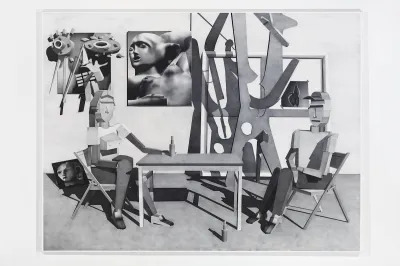
Image Credit: Roman März/©Avery Singer/Courtesy the artist and Hauser & Wirth The notion that painting is a fundamentally analog medium has come to seem passé as artists have begun to enlist video and software alongside their brushes and canvases. In this survey, the focus is artists who have lured technology into the painterly process, at times barely even touching the works that result with their own hands. Take the case of Avery Singer’s paintings made using Google SketchUp, for which the artist created the underdrawings of her canvases on a computer and then filled in her digital figures by hand using acrylic, effectively marrying brushstroke and keystroke.
November 9, 2024–April 13, 2025
-
“Ceremonies Out of the Air: Ralph Lemon” at MoMA PS1, New York
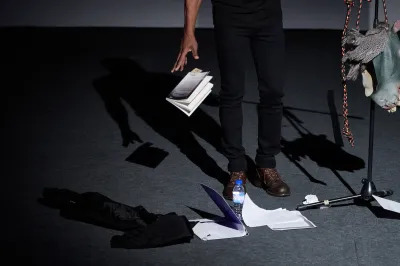
Image Credit: Photo Jose Caldeira/Courtesy the artist Starting in 2002, choreographer Ralph Lemon began to visit Yazoo, Mississippi, to spend time Walter Carter, a former sharecropped whom Lemon engaged as his collaborator. Together, the two would reenact portions of Solaris and Alphaville, and use the language of those famed arthouse films to speak to alienation resulting from years and years of racism. Photographs and videos related to that ongoing project, formally titled 1856 Cessna Road, is among the 60 works in this survey, which highlights this influential artist’s sprawling network. Accordingly, though its title makes it appear like a one-person show, its participants are many: Kevin Beasley is set to debut a new video and sound installation with Lemon here, and Okwui Okpokpwasili, Darrell Jones, and more are on tap to perform live in the museum’s galleries.
November 14, 2024–2025
-
“Cassils: Movements” at SITE Sante Fe, New Mexico
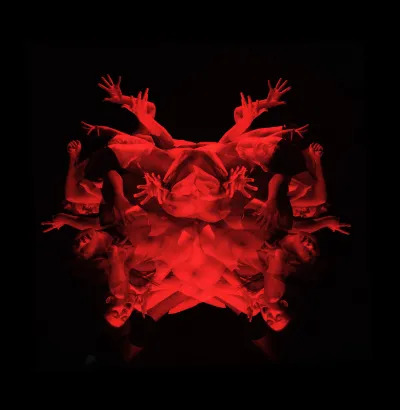
Image Credit: Manuel Vason, Design by Cathy Davies/Courtesy the artist In 2022, for a Cassils performance called Human Measure, six trans and nonbinary performers moved around on stage in low light on a muslin canvas treated with cyanotype solution. That canvas ended up recording their bodies, acting as a “visual language that denies [the] kind of invisibility” typically afforded to trans and nonbinary people, as the artist as put it. Cassils will continue honing that visual language with sound and video installations that rework Human Measure for a gallery space, effectively ensuring that the artist’s temporary performances are made permanent.
November 15, 2024–February 3, 2025
-
“Vincent Valdez: Just a Dream…” at Contemporary Arts Museum Houston, Texas
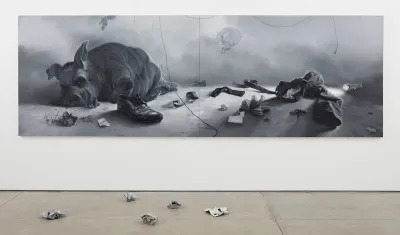
Image Credit: Paul Salveson/Collection of David Hoberman Two years before Philip Guston’s paintings of Klansmen initiated widespread controversy, Vincent Valdez faced similar scandal for showing his own 30-foot-long painting of these hooded white supremacists. With its grand scale and its piercing detail, the piece exemplified Valdez’s unique ability to stare back at forces of evil and present them to the public, whether it is ready to look at these images or not. Valdez’s first-ever museum survey marshals his drawings, paintings, prints, and more, taking up subjects such as violence inflicted upon immigrants and the strength of the Latinx community in the face of it along the way.
November 15, 2024–March 23, 2025
-
“Luc Tuymans: The Past” at UCCA Contemporary Art Center, Beijing
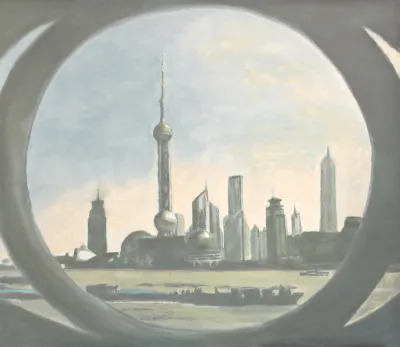
Image Credit: ©Luc Tuymans/Courtesy the artist and David Zwirner Well before the current craze for figurative painting, Luc Tuymans made a name for himself during the ’90s with canvases featuring imagery appropriated from the media, then largely drained of color. His subjects would go on to include Condoleezza Rice, stills from Singin’ in the Rain and Mulholland Drive, and alienated-looking people; though not always political, the paintings seemed to allude to the loss of history and the pervasiveness of evil. Eighty of Tuymans’s pictures will figure in this show, which places a specific focus on his work about China, a country whose globalized economy has long fascinated the Belgian artist.
November 16, 2024–February 16, 2025
-
“Amy Sherald: American Sublime” at San Francisco Museum of Modern Art
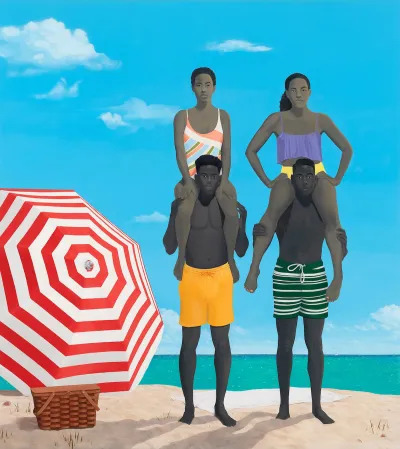
Image Credit: Joseph Hyde/Courtesy the artist and Hauser & Wirth/Crystal Bridges Museum of American Art, Bentonville, Arkansas Amy Sherald made a splash when, in 2018, she unveiled her official portrait of Michelle Obama, who was pictured wearing a Michelle Smith–designed dress that flowed beautifully across her legs, cutting through Sherald’s eggshell blue background. This sharp painting looked like few other official portraits before it, and it cemented Sherald’s reputation as a painter of note. This show, her first mid-career survey, seals the deal, bringing together 50 paintings of Black men, women, and children, all pictured against monochromatic backgrounds. Expect the exhibition to attest to how Sherald altered the trajectory of figurative painting.
November 16, 2024–March 9, 2025
-
“Joseph Beuys: In Defense of Nature” at the Broad, Los Angeles
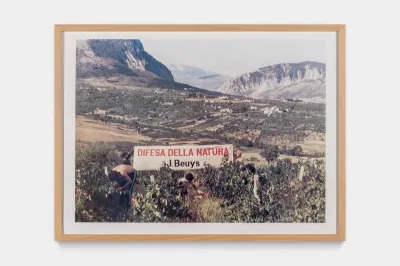
Image Credit: Joshua White/JWPictures.com/©Artists Rights Society (ARS), New York/VG Bild-Kunst, Bonn/Broad Art Foundation Around the same time as this exhibition, a reforestation project called Social Forest: Oaks of Tovaangar, organized by archaeologist Desireé Reneé Martinez and artist Lazaro Arvizu Jr., will see 100 California oak trees planted in Elysian Park. It’s a gesture that blurs the line between conceptual art and ecological renewal, and one that’s meant to recall Joseph Beuys’s 7000 Eichen (7000 Oaks, 1982), for which the German artist planted thousands of trees in Kassel, Germany. Did that work make Beuys an accidental eco-art pioneer? This 400-work survey suggests that when Beuys manipulated the landscape around him, he thought deeply about humanity’s shifting relationship to the environment, whose tenuousness he understood well before climate change became a public concern.
November 16, 2024–April 6, 2025
-
“Flight into Egypt: Black Artists and Ancient Egypt, 1876–Now” at Metropolitan Museum of Art, New York
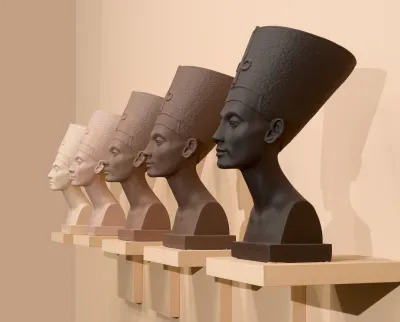
Image Credit: Brooklyn Museum This ambitious show proves that for many Black artists of the past century and a half, the Egypt of millennia ago remains a force in the present. Expected artists figure in the show’s 150-person list: Meta Vaux Warrick Fuller, a Harlem Renaissance sculptor who recycled pharaonic imagery for a new age; Kara Walker, who sexualized sphinx sculptures have provoked controversy and admiration; Awol Erizku, whose photographs have featured miniature recreations of Egyptian statues. But the participants also include multihyphenates such as Sun Ra and Solange, whose works in various fields have ensured that ancient Egyptian styles continue to infiltrate pop culture.
November 17, 2024–February 17, 2025
-
“The 80s: Photographing Britain” at Tate Britain, London
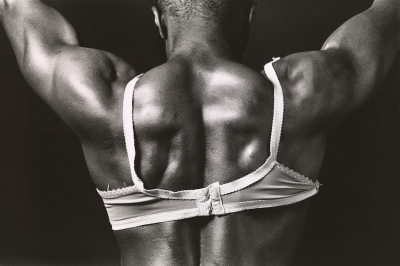
Image Credit: ©Ajamu X A miners’ strike, the AIDS pandemic, a conservative crackdown on the queer community: all this and more happened in England during the 1980s, a decade whose tumult gave way to a photographic revolution. Rather than making overarching pronouncements about all the pictures that resulted, this 350-work show opts for variety, spotlighting both documentary and conceptual modes alike while also featuring works that sometimes do not look much like traditional photography at all. Many artists here blend multiple modes of working; the Scottish photographer Maud Sulter, for example, often pictured Black women playing semi-fictional characters as a means of questioning how race is performed.
November 21, 2024–May 5, 2025
-
“Electric Dreams: Art and Technology Before the Internet” at Tate Modern, London

Image Credit: ©Eduard Kac/Tate Many technologically minded art exhibitions in the past decade have used the birth of the World Wide Web, in 1989, as a starting point. Here, however, it is the endpoint, with nearly all this show’s contents focusing on artworks made in the pre-internet age. Staples of postwar art history will figure here, among them Atsuko Tanaka’s Electric Dress (1957), a wearable sculpture formed from multicolored light bulbs. But generally, the focus is on art awaiting canonization, from experiments done by the Yugoslavian New Tendencies artists of the 1960s to Samia Halaby’s abstractions done on an Amiga 1000 computer during the 1980s.
November 28, 2024–June 1, 2025
-
“Digital Witness: Revolutions in Design, Photography, and Film” at Los Angeles County Museum of Art
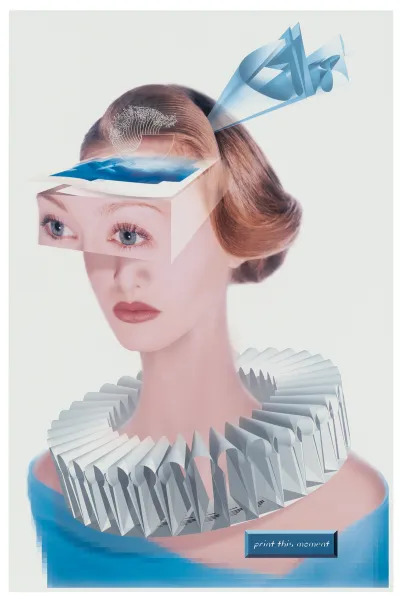
Image Credit: ©Rick Valenti/Courtesy the artist/Los Angeles County Museum of Art Not quite an art exhibition yet not quite a design show either, this cross-disciplinary survey sets out to explore how digital technologies have reshaped artists’ ability to portray reality since the 1980s. It’s a wide-ranging inquiry, and so the offerings are unusually expansive, with a clip from Jurassic Park placed within the same galleries as work by Petra Cortright, whose webcam-shot videos, often augmented with chintzy digital effects, made her a closely watched artist during the post-internet era. Then again, tools like Photoshop can be used to many different ends, from digital design to conceptual photography, and the show is meant to be open-ended as a means of reflecting that.
November 24, 2024–July 13, 2025
-
“Ordinary People: Photorealism and the Work of Art since 1968” at Museum of Contemporary Art Los Angeles
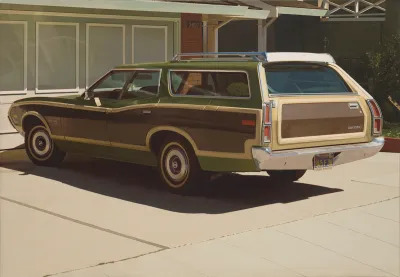
Image Credit: Ben Blackwell/©Robert Bechtle and Whitney Chadwick Trust/Courtesy of the Robert Bechtle and Whitney Chadwick Trust and Gladstone Gallery/San Francisco Museum of Modern Art The paintings of Photorealist artists such as Audrey Flack and Robert Bechtle look like camera-made images, even though they were produced by hand using oil and acrylic. That, of course, was the point: these artists sought to question whether painting could function like photography in its quest to portray life itself. Often derided as kitsch (even though these artists were sometimes trying for just that, “good” taste be damned), Photorealism gets proper consideration with this survey. The show charts the movement’s evolution during the 1970s and then expands it to the current moment, offering up figurative painters such as Gina Beavers and Sayre Gomez as modern-day inheritors to artists like Flack and Bechtle.
November 23, 2024–May 4, 2025

